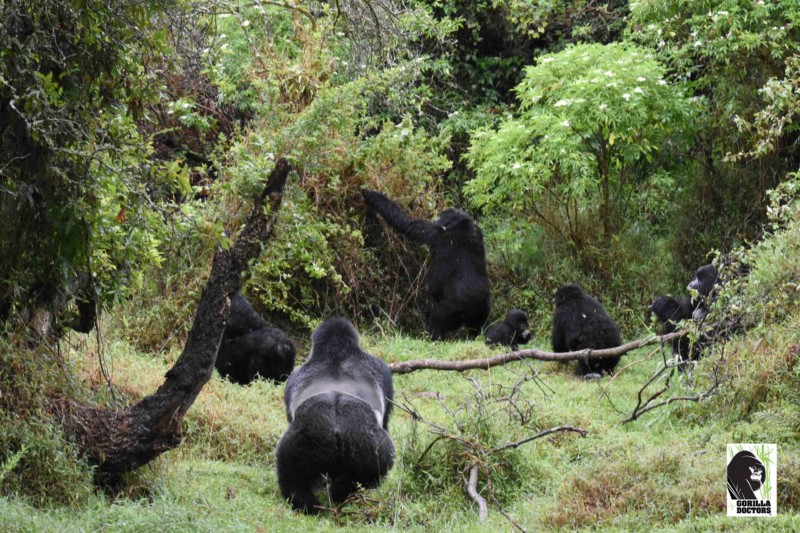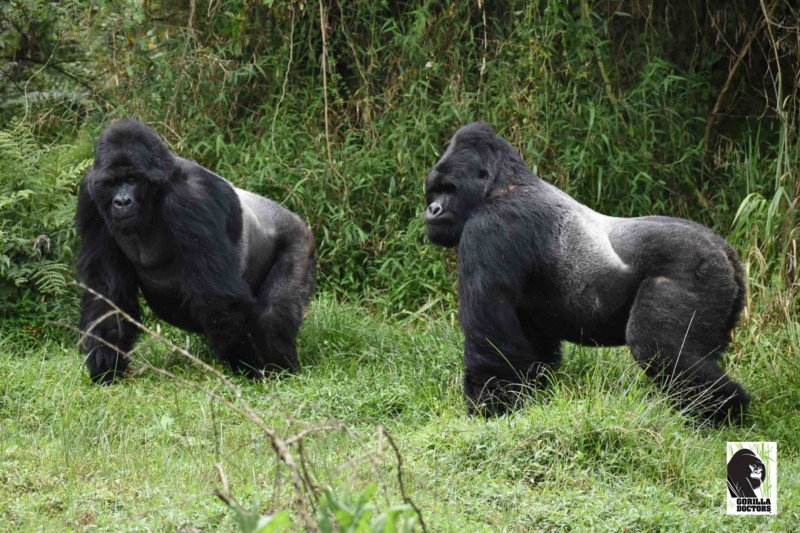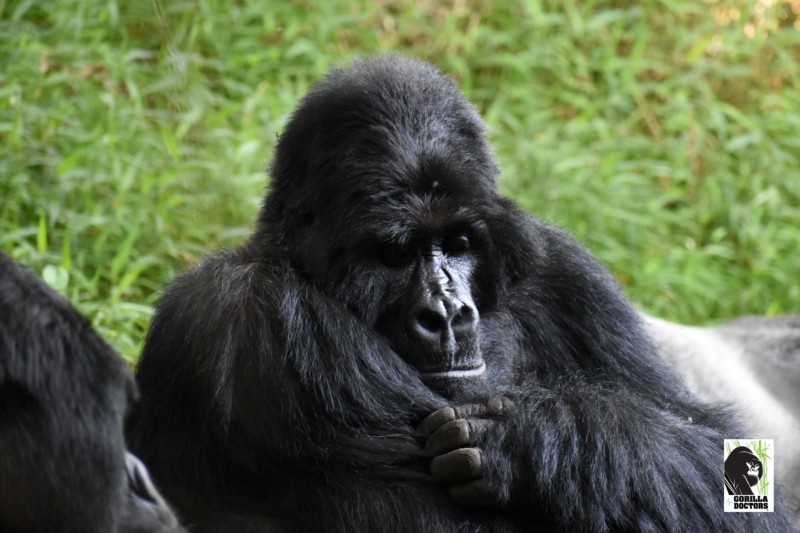Mafia the Silverback Mountain Gorilla: An Unusual Case
By Gorilla Doctors Staff on Thursday, March 21st, 2019 in Blog.Gorilla Doctors is sad to report on the March 6th death of Mafia, a silverback with the Nyakagezi group in Mgahinga Gorilla National Park (MGNP), Uganda. Mafia’s case is unusual because he was one of four silverbacks in a group with only two adult females and two infants.
The classic social structure for mountain gorillas is a single dominant silverback with a group of females, blackbacks (sexually immature males), juveniles and infants. The Gorilla Doctors team in Uganda had been closely monitoring Mafia’s health since November 2018 when he was injured as a result of naturally occurring male-male competition and fighting among the silverbacks.
Gorilla Doctors core mission is to intervene when a gorilla is sick or injured as a result of human-related issues such as snares or respiratory infections. When injury or illness occurs as a result of natural behaviors, as was the case with Mafia, we perform regular monitoring visits and consider intervening at the request of our government partners, especially when conditions become life-threatening. This proved to be the case with Mafia, whom we monitored and cared for in close consultation with the Uganda Wildlife Authority. Below is a summary of his decline, our initial postmortem findings and what may have been possible with the addition of a portable ultrasound machine to Gorilla Doctors’ clinical field kit.
Case Study: Mafia, Silverback, Nyakagezi Group, MGNP, Uganda
November 2018 – March 2019
Late November 2018 – Park rangers notified Gorilla Doctors that Mafia appeared to be limping, was trailing behind the group and had two fresh wounds. Gorilla Doctors performed a health check the next day and confirmed a wound to his buttocks area as well as a wound on his foot. Gorilla Doctors continued monitoring visits through December.
January 2019 – By January it was clear that Mafia’s wounds were not healing and were affecting his ability to sit upright, as well as hampering his feeding. He started losing weight.
February 2019 – As Mafia’s health condition continued to deteriorate, it was difficult to tell whether it was related to his wounds, or was related to ongoing stressful interactions with the dominant silverback, Mark. Gorilla Doctors performed two partial interventions – providing antibiotics and anti-inflammatory medications via dart. Post-treatment his health improved slightly and for a few days he seemed more active. But the wounds would not heal and continued to affect his feeding, weight and movement.
March 1st to March 6, 2019 – Park rangers and Gorilla Doctors continued intensive monitoring and on March 3rd, Gorilla Doctors found Mafia 1km from the group and still in his night nest. Both wounds, while open, were clean and did not appear to be infected and he had no new wounds. After 30 minutes of observation he began moving (limping) and feeding only minimally. Gorilla Doctor Ricky Okello tested him for parasites (using feces from night nest) and found Mafia’s parasite ‘load’ to be within the normal range. Without a full intervention (anesthetization of Mafia), it would be nearly impossible to diagnose what other pathology may be impacting Mafia’s overall decline.
Park rangers monitored Mafia daily for any significant changes to his condition and on March 5th reported to Gorilla Doctors that Mafia stayed in his night nest the entire day. On March 6th, Dr. Ricky trekked out early in the morning to determine if another intervention was needed only to find that Mafia had died in the night.
Initial Postmortem Results
The postmortem exam revealed that Mafia’s cause of death was seemingly unrelated to the wounds on his buttocks and foot. Major pathological findings included multiple intestinal lesions and a mass comprising nearly 60% of his spleen. A full set of tissue samples were collected and are currently at our laboratory being prepared for further analysis.
Conclusions
As veterinarians, and especially as veterinarians for endangered gorillas, we always ask ourselves if we could have done more to save this animal’s life. In Mafia’s case, his decline and death were entirely the result of natural causes. Gorilla Doctors was able to support pain management and infection by administering antibiotics and anti-inflammatory treatments on two separate occasions.
Mafia’s case highlights the complex and often challenging conditions of working with wildlife in their natural habitat. Specialized equipment for field use can be very expensive, but never removing an animal from the wild for treatment is central to Gorilla Doctors mission. A full intervention – anesthetizing Mafia in the forest – may have revealed more information as to what was causing his decline. Special field diagnostic equipment, like a portable ultrasound machine, could have proven useful in this particular case, providing us with clues as to what was causing Mafia’s decline, but unfortunately Gorilla Doctors does not currently have a portable ultrasound machine at its disposal.
Photo Credits: Dr. Fred Nizeyimana, Field Veterinarian, Uganda, Gorilla Doctors


 Donate
Donate


